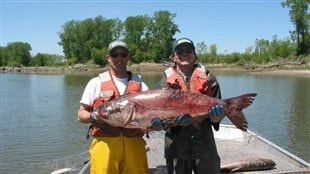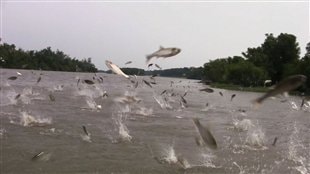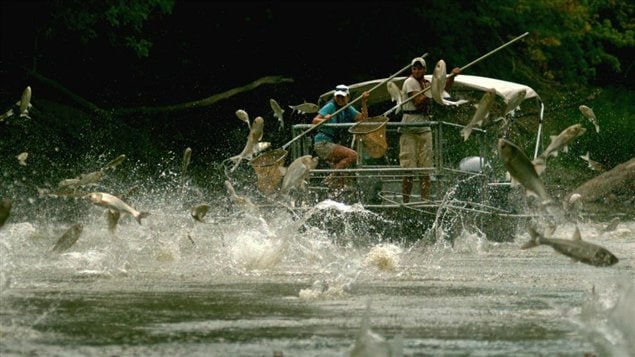Asian carp have overtaken some major US rivers, are moving into the Great Lakes at the heart of North America and may soon threaten Canadian waterways, says a documentary to be aired October 3rd.
“The Asian carp has come to be hated in North America because it has the ability to out-feed, out-breed, out-live and completely dominate any sort of water that it inhabits,” says Scott Dobson, director and writer of Carpe Diem: A Fishy Tale.
“The Asian carp has the ultimate ability to wipe out native species of fish to the point where they completely disappear,” adds Dobson. “And they also have the ability to so overwhelm a water system in sheer numbers that it ruins the waterways for human use.”

Asian carp could overwhelm Canadian waters
So many Canadian watersheds and river systems are connected to the Great Lakes that if the Asian carp manages to establish a colony there, the government projects the fish could become present in almost every river system south of Canada’s 60th parallel within 25 years.
“North Americans, especially Canadians love their boating culture,” says Dobson. “They like to fish, they like recreation (like) waterskiing, everything. When Asian carp invade a system they invade in such huge numbers that they kill the fishery so the sport aspect of fishing is gone and then, because one of the family members, the silver carp, has the ability to jump out of the water it makes going out on the water dangerous for anyone.”
Fish like “live bombs”
The fish can weigh 50 kilograms and jump 2 meters straight up into the air. “You basically have live bombs coming in on your boat that can knock people unconscious, that can damage the boat and, in a really bad situation, they can actually land and break a boat’s throttle or knock the boat into drive…creating a really dangerous on-water situation,” says Dobson.
The fish are also slimy, they bleed heavily when cut, and they defecate when frightened leaving an awful, slippery and dangerous mess.
Flooding released carp into rivers
Asian carp were originally brought into the US in the 1970s because, as voracious eaters, it was thought they could keep reservoirs clean. Some owners of fish farms used the fish to clean their operations.
Flooding of the Arkansas and Mississippi Rivers in the 1980s and 90s allowed the Asian carp to escape and invade surrounding waterways.

Spread would be “incredibly scary”
There is some discussion about permanently blocking some rivers that flow between the United States and Canada. US authorities have set up some electrical barriers near Chicago to stun the fish and prevent them from moving north into the Great Lakes. Some have got through anyway but not enough yet to establish colonies.
The Canadian government is monitoring the fish closely and is considering some plans should the numbers increase. The carp need to move up rivers to spawn, so officials are considering using underwater canon to discourage them from going upstream.
If they fail to stop the spread of Asian carp in Canada “that’s incredibly scary because it would change the entire way that Canadians relate to their water systems,” says Dobson.
Carpe Diem: A Fishy Tale airs on the public broadcaster, CBC’s program The Nature of Things Thursday, October 3, 2013 at 8pm EDT and will be posted on the internet.
Count the Carp! from Rock Yenta Productions on Vimeo.







For reasons beyond our control, and for an undetermined period of time, our comment section is now closed. However, our social networks remain open to your contributions.